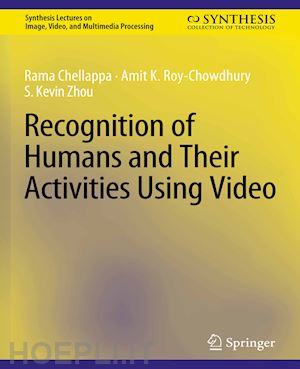Rama Chellappa received the B.E. (Hons.) degree from the University of Madras, India, in 1975 and the M.E. (Distinction) degree from the Indian Institute of Science, Bangalore, in 1977. He received the M.S.E.E. and Ph.D. degrees in elec trical engineering from Purdue University, West Lafayette, IN, in 1978 and 1981, respectively. Since 1991 he has been a Professor of Electrical Engineering and an Affil iate Professor of Computer Science at the University of Maryland, College Park. He is also affiliated with the Center for Automation Research (Director) and the Institute for Advanced Computer Studies (permanent member). Prior to joining the University of Maryland, he was an Assistant (1981–1986) and Associate Pro fessor (1986–1991) and Director of the Signal and Image Processing Institute (1988–1990) with the University of Southern California, Los Angeles. Over the last 23 years he has published numerous book chapters, peer reviewed journal and conference papers. He has edited a collection of papers on Digital Image Process ing (published by IEEE Computer Society Press), coauthored (with Y.T. Zhou) a research monograph on Artificial Neural Networks for Computer Vision, published by Springer-Verlag, and coedited (with A.K. Jain) a book on Markov Random fields, published by Academic Press. His current research interests are face and gait analysis, 3D modeling from video, automatic target recognition from stationary and moving platforms, surveillance and monitoring, hyper spectral processing, image understanding, and commercial applications of image processing and understanding. Dr. Chellappa has served as an associate editor of the IEEE Transactionson Signal Processing, Pattern Analysis and Machine intelligence, Image Processing, and Neural Networks. He was a coeditor-in-chief of Graphical Models and Image Process ing. He also served as the editor-in-chief of IEEE Transactions on Pattern Analysis and Machine Intelligence during 2001–2004. He has also served as a member of the IEEE Signal Processing Society Board of Governors during 1996–1999 and as its Vice President of Awards and Membership during 2002–2004. He has received several awards, including NSF Presidential Young Investigator Award, an IBM Faculty Development Award, the 1990 Excellence in Teaching Award from the School of Engineering at USC, the 1992 Best Industry Related Paper Award from the International Association of Pattern Recognition (with Q. Zheng), and the 2000 Technical Achievement Award from the IEEE Signal Processing Society. He was elected as a Distinguished Faculty Research Fellow (1996–1998) and as a Distinguished Scholar–Teacher (2003) at the University of Maryland. He is a fellow of the International Association for Pattern Recognition. He has served as a General the Technical Program Chair for Server IEEE international and national conferences and workshops. Amit K. Roy-Chowdhury received the B.E. degree in electrical engineering from Jadavpur University, India, in 1995; the M.E. degree in systems science and automation from the Indian Institute of Science, Bangalore, in 1997; and Ph.D. from the University of Maryland, College Park, in 2002. His Ph.D. thesis was on sta[1]tistical error characterization of 3D modeling from monocular video sequences. His current research interests are in motion and illumination modeling in video sequences, computational models for human activity recognition, and video sensor networks. Since 2004 he has been an Assistant Professor in the Department of Electrical Engineering, University of California, Riverside. In 2003 he was with the Center for Automation Research, University of Maryland, College Park, as a Research Associate, where he worked in projects related to face, gait, and activity recognition. He is the author of a number of papers, book chapters, and magazine THE AUTHORS 173 articles on motion analysis, 3D modeling, and object recognition. He is a reviewer for journals in signal and image processing and computer vision and has served on the Program Committees of major international conferences in these areas. He was a recipient of University of California Regents’ Faculty Fellowship Award in 2004–2005. S. KEVIN ZHOU S. Kevin Zhou is a Research Scientist at Siemens Corporate Research, Princeton, New Jersey. He received his B.E. degree in electronic engineering from the University of Science and Technology of China, Hefei, China, in 1994; M.E. degree in computer engineering from the National University of Singapore in 2000; and Ph.D. in electrical engineering from the University of Maryland at College Park in 2004. He has broad research interests in signal/image/video processing, computer vision, pattern recognition, machine learning, and statistical inference and computing. He has published more than 30 technical papers and book chapters on echocardiography image processing, visual recognition (in particular face recognition under unconstrained conditions, such as video sequences, illuminatio











